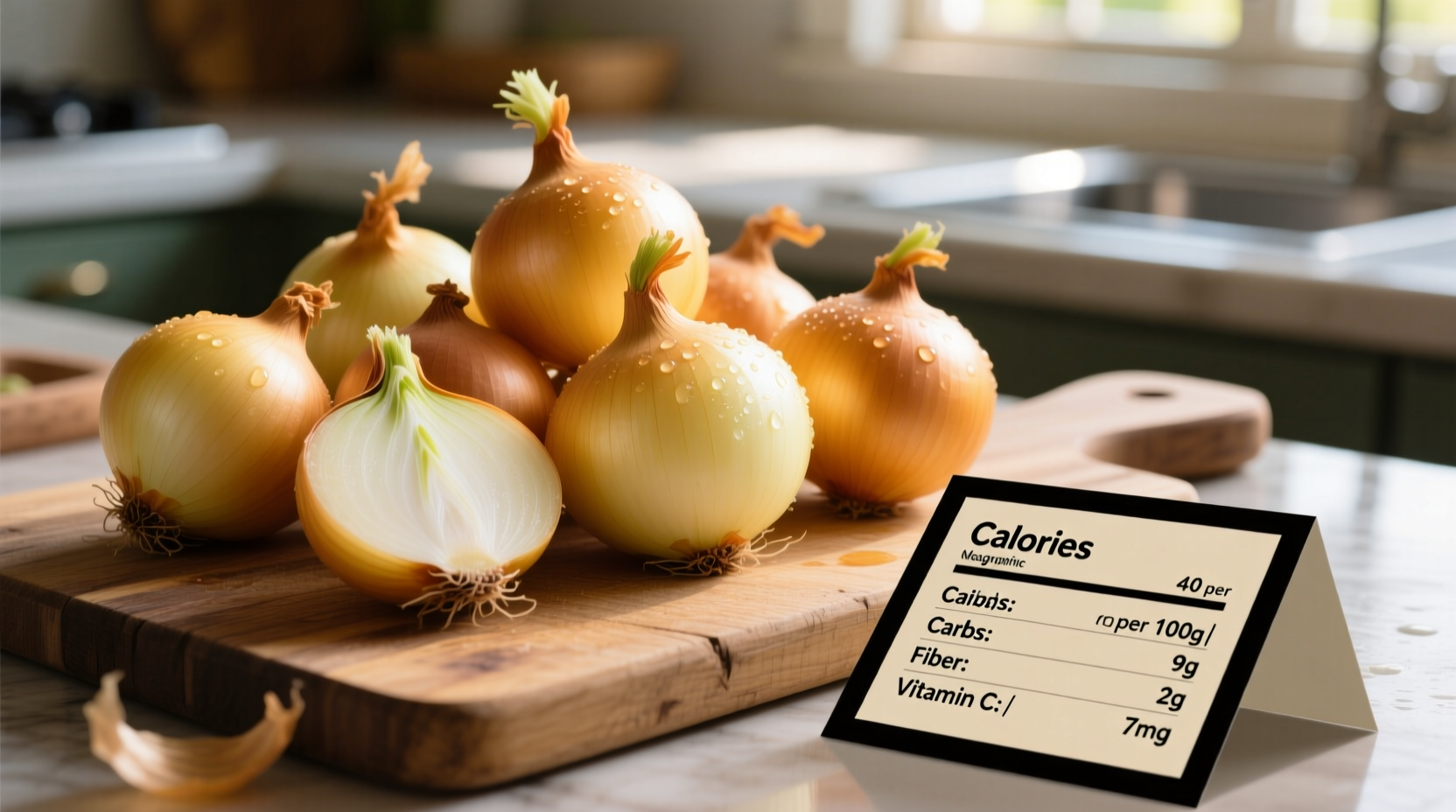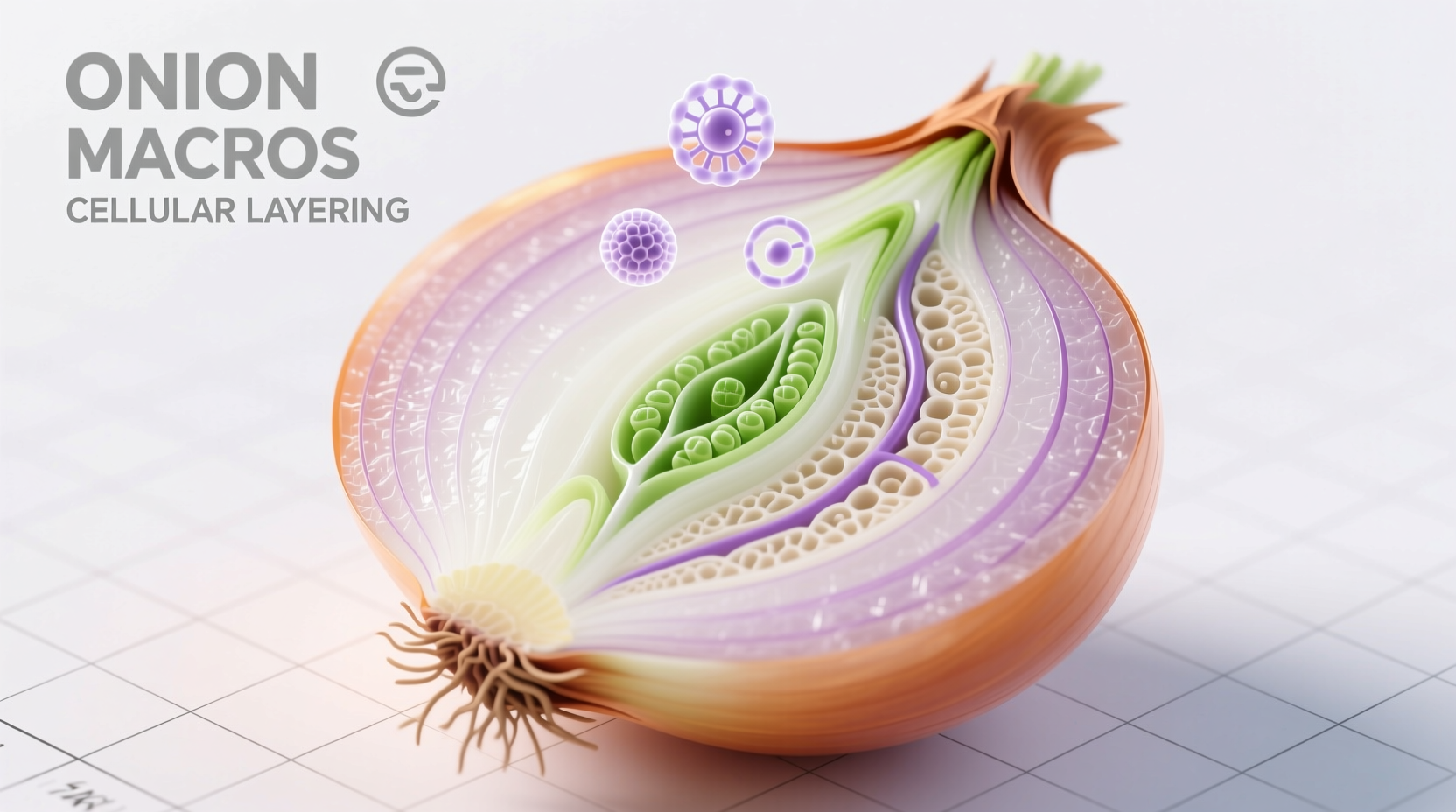Understanding onion macros provides crucial information for meal planning, dietary management, and optimizing flavor without compromising nutritional goals. Whether you're tracking carbohydrates for diabetes management, monitoring protein intake for fitness goals, or simply seeking to understand what you're consuming, precise macro data matters.
Breaking Down Onion Macro-Nutrient Composition
Onions might seem like a simple kitchen staple, but their macro-nutrient profile reveals why they've become a global culinary foundation. The carbohydrate content primarily consists of natural sugars and dietary fiber, with minimal protein and almost negligible fat. This composition makes onions exceptionally versatile across dietary approaches from keto to Mediterranean eating patterns.
| Onion Variety | Carbs (per 100g) | Protein (per 100g) | Fat (per 100g) | Calories |
|---|---|---|---|---|
| Yellow Onion (raw) | 9.3g | 1.1g | 0.1g | 42 |
| Red Onion (raw) | 9.0g | 1.2g | 0.1g | 40 |
| White Onion (raw) | 8.8g | 1.1g | 0.1g | 39 |
| Green Onions (raw) | 7.3g | 1.8g | 0.2g | 32 |
Data sourced from the USDA FoodData Central database (2023 update) provides the most current nutritional analysis of common onion varieties. This official government resource represents the gold standard for food composition data used by nutrition professionals worldwide.
How Cooking Methods Transform Onion Macros
Caramelizing onions significantly concentrates their natural sugars while reducing water content, which affects the perceived macro-nutrient density. When you cook one cup of raw onions (about 160g), the volume reduces to approximately 1/3 cup while the carbohydrate content remains relatively stable at around 15g. This concentration effect explains why caramelized onions taste sweeter despite containing the same total carbohydrates.
Roasting onions preserves more of their original macro profile compared to frying, as less moisture evaporates during the cooking process. Sautéing with minimal oil adds negligible fat content—approximately 5g per tablespoon of oil used—but doesn't substantially alter the onion's inherent macro composition.

Practical Applications for Dietary Planning
For those following low-carb or ketogenic diets, understanding onion macros becomes particularly valuable. A standard medium onion (about 110g) contains approximately 10g of net carbohydrates, which represents a significant portion of daily carb allowances for strict keto dieters. Substituting green onions, which contain about 30% fewer carbohydrates by volume, can help maintain flavor while reducing carb intake.
Dietitians frequently recommend incorporating onions into meal plans for their fiber content, which constitutes about 1.7g per medium onion. This dietary fiber supports digestive health and helps moderate blood sugar responses to meals. The protein content, while modest, contributes to the overall amino acid profile of plant-based meals when combined with complementary protein sources.
Contextual Considerations for Different Dietary Approaches
When evaluating onion macros, consider these important contextual factors that affect their nutritional impact:
- Keto diets: Limit to 1-2 tablespoons of cooked onions per serving to maintain ketosis
- Diabetes management: Raw onions have a lower glycemic impact than cooked varieties
- Athletic performance: Onions provide quick-digesting carbohydrates ideal for pre-workout meals
- Weight management: High water and fiber content creates volume with minimal calories
The nutritional science community has evolved its understanding of onion macros over time. Early 20th century analyses focused primarily on caloric content, while modern research examines specific carbohydrate fractions and their metabolic effects. Current studies investigate how onion polysaccharides interact with gut microbiota, potentially offering benefits beyond basic macro-nutrient accounting.
Common Misconceptions About Onion Nutrition
Many home cooks mistakenly believe that all onion varieties have identical nutritional profiles. Research published in the Journal of Food Composition and Analysis demonstrates measurable differences between varieties, particularly in their carbohydrate composition. Red onions contain slightly more quercetin, a flavonoid that affects how carbohydrates are metabolized.
Another prevalent myth suggests that cooking destroys all nutritional value in onions. While heat-sensitive compounds like certain vitamins decrease, the macro-nutrient profile remains largely stable, and cooking actually increases the bioavailability of beneficial organosulfur compounds.
Strategic Incorporation Into Balanced Diets
Professional chefs and nutritionists recommend these evidence-based strategies for optimizing onion macros in meal planning:
- Use raw onions in salads for maximum fiber retention and minimal carbohydrate concentration
- Pair onions with healthy fats like olive oil to enhance absorption of fat-soluble compounds
- Balance higher-carb onion varieties with low-carb vegetables in stir-fries and sautés
- Consider the water content reduction when substituting between raw and cooked applications
Understanding these macro-nutrient dynamics allows home cooks and professional chefs alike to make informed decisions that support both flavor goals and nutritional objectives. The versatility of onions across culinary applications stems directly from their balanced macro composition and how it responds to various cooking techniques.
Frequently Asked Questions
How do onion macros differ between raw and cooked preparations?
Raw onions contain approximately 9.3g of carbohydrates per 100g, while cooking concentrates these carbohydrates as water evaporates. A medium raw onion (110g) yields about 1/3 cup of caramelized onions with similar total carbohydrate content but higher density. The protein and fat content remain relatively stable through cooking processes.
Are onions considered high-carb vegetables?
Compared to non-starchy vegetables like leafy greens, onions contain moderate carbohydrates at 9.3g per 100g. They fall below starchy vegetables like potatoes (17g per 100g) but above vegetables like zucchini (3.1g per 100g). For most dietary approaches, onions are considered a moderate-carb vegetable that can be incorporated strategically.
Which onion variety has the lowest carbohydrate content?
Green onions (scallions) contain the lowest carbohydrate content among common onion varieties at approximately 7.3g per 100g, about 20% less than yellow onions. White onions follow closely at 8.8g per 100g. This makes green onions particularly valuable for low-carb and ketogenic dietary approaches where every gram of carbohydrate counts.
Do onions provide significant protein content?
Onions contain modest protein levels at approximately 1.1g per 100g, which contributes to overall daily intake but shouldn't be considered a primary protein source. The protein in onions complements other plant-based proteins in meals, and cooking doesn't significantly alter this content. While not high in protein, onions enhance the flavor of protein-rich foods, making them valuable in balanced meal planning.











 浙公网安备
33010002000092号
浙公网安备
33010002000092号 浙B2-20120091-4
浙B2-20120091-4